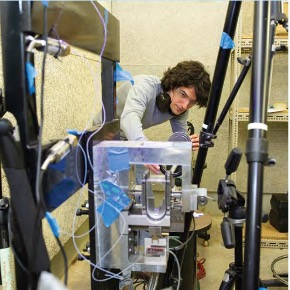Women have fared worse than men during the pandemic, highlighting the importance of a sweeping initiative to create gender equity in leadership launched last year by the PLuS Alliance.
Underway for several months, the Transforming Women's Leadership Pathways initiative released an action plan earlier this month that details the lack of women in leadership, clarifies the barriers to advancement and lays out many recommendations to achieve equity.
Faculty, administrators, staff and students from all three institutions have been working on the Transforming Women's Leadership Pathways initiative since last year. Their goal is to fast-track the achievement of gender equity by 2030 by implementing the recommendations in the PLuS Alliance report released March 11.
“Employers’ commitment to equality is being tested and found wanting,” wrote Eileen Baldry in the forward to the report. She is a professor of criminology and deputy vice chancellor for equity, diversity and inclusion at the University of New South Wales.
Baldry noted that women account for 39% of global employment, yet constitute 54% of overall job losses in the pandemic.
“Gender equity is an essential primary goal as we rebuild economies,” she wrote.
The action plan is divided into 10 areas, each with its own working group drawn from the three universities. Each section includes the current state of the sector, barriers to equity, and recommendations for government, industry and universities.
Antoinette Farmer-Thompson, deputy vice president for educational outreach and student services at ASU, was one of the leads for the working group on corporations.
At the launch event, she described the action plans created by her group and the higher education group. "We found that there were consistencies across all working groups,” she said.
“There’s great interest in every single industry for women to participate at higher levels of leadership.” The higher education team found that 39 of the top 200 universities are led by women.
“That is the case even though we see across the globe that more women are getting more degrees than men,” she said. The report also looked at intersectionality. In the U.S., 86% of higher-education administrators are white. “There are a lot of legacy processes so difficulty to move the system,” she said. Farmer-Thompson said that another barrier is lack of institutional commitment, but she praised ASU President Michael Crow, who recently reorganized the university and appointed women to lead the three sectors. The interim President and Principal at King's College London is Professor Evelyn Welch and Professor Funmi Olonisakin is Vice-President and Vice-Principal International at King's, two women holding two of the most senior roles at the university.
“It’s one thing to have awareness and it’s another thing to have action,” she said.
Farmer-Thompson said that COVID-19 has exacerbated inequities in the corporate world.
“You’ve all heard that approximately 2.2 million women left the workforce between February and October of 2020,” she said.
“We are the people carrying the diversity conversation, bringing to bear the need for diversity on a daily basis. The pandemic could set us back another 10 years.”
The report found huge disparities in leadership:
- Women made up 36% of elected local government officials worldwide in 2020.
- Around the world, women hold 24% of senior corporate leadership positions, a decrease from 25% in 2017. The U.S. lags behind the global average at 21%, compared to China, where women hold 51% of corporate leadership slots.
- Women make up 20% of engineering graduates and it is estimated that 40% of women who earn an engineering degree either leave or never enter the profession.
- Women receive 7% of venture funds for their startups, and in the U.S., although women of color account for 50% of all female-owned businesses, those founders receive less than 1% of venture capital funds.
- About 56% of women in technology leave their employers mid-career, and of the women who leave, 24% leave the profession altogether.
The most common recommendations in the report were to establish stronger networks, improve pathways for women and require reporting of equity efforts. Other suggestions include:
- Establish on-site child-care facilities.
- Tie executive compensation bonuses to gender diversity efforts.
- Publish data on salaries, promotions, hiring and even assignments in the media sector.
- Train people to be more effective at running meetings to ensure that everyone is heard and women are not cut off.
- Embed a culture of “speaking out” and eliminating aggressive and undermining behavior by training managers to recognize and deal with those behaviors.
During the event that unveiled the report, Sarah Jones, director of global strategic partnerships for ASU, said that there have already been strategic design sessions to determine the next steps. Those discussions led to the idea for an international initiative with a tentative name.
“The Global Alliance for Equity in Leadership, or GAEL, would be an international coalition to bring partners from universities, industry and government with a focus on using evidence-based practices,” she said.
“We want to be the go-to place when a corporation is looking to change its culture. We want to be a trusted source of information and proven solutions.”


